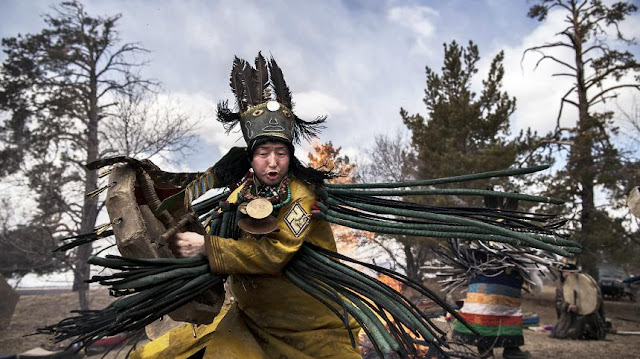The Eight Auspicious Symbols are one of the most common, yet very popular in the Vajrayana Buddhism or Tibetan Buddhism and culture for over thousands of years.
The Eight Auspicious Symbols are traditionally offered to Lama, teachers during long life ceremonies and are used in various forms of ritual art. It is believed that each of the Tibetan symbols represents one aspect of the Buddha’s teachings and when appearing all together their powers are multiplied.
In this fascinating study,the Eight Auspicious Symbols are as follows:-
1. Right-Coiled White Conch Shell
2. Precious Parasol
3. Victory Banner
4. Golden Fishes
5. Dharma Wheel
6. Endless Knot
7. Lotus Flower
8. Treasure Vase
These eight symbols of good fortune represent the offerings made by the Gods, and Brahma to Shakyamuni Buddha immediately after he attained enlightenment.
What do the eight symbols of Buddhism mean?
In Buddhism, these eight symbols of good fortune represent the offerings made by the gods to Shakyamuni Buddha immediately.
The Dharma wheel in Tibetan is known as "kore-low". The Golden Wheel, or Dharma Wheel, symbolises the auspiciousness of the turning of the precious wheel of Buddha's doctrine, both in its teachings and realisations, in all realms and at all times, enabling beings to experience the joy of wholesome deeds and liberation.
This golden wheel is also called the Dharma chakra or the Dhamma chakka and is often used to represent Buddha himself. It has also universally become a symbol of Buddhism. The Dharma wheel has eight spokes, which represent Buddha’s Eightfold Path.
What is the Dharma Wheel, or Dharmachakra?
The Wheel of the Law (Dharmachakra) is the single most important symbol of Buddhism, denoting the Buddha's First Sermon in the forest at Sarnath, where he set Buddhist Law (Dharma) in motion.
The Dharma wheel, or Dharmachakra in Sanskrit, is one of the oldest symbols of Buddhism. Around the globe, it is used to represent Buddhism in the same way that a cross represents Christianity or a Star of David represents Judaism. It is also one of the Eight Auspicious Symbols of Buddhism. Similar symbols are found in Jainism and Hinduism.
Who invented Dharmachakra?
Symbolic history. When Gautama Buddha, After achieving enlightenment at Bodh Gaya, he came to Sarnath. There, he found his five disciples, Assaji, Mahanaman, Kondanna, Bhaddiya, and Vappa, who had earlier abandoned him. He introduced his first teachings to them, thereby establishing the Dharmachakra.
A traditional Dharma wheel is a chariot wheel with varying numbers of spokes. It can be any colour, although it is most often gold. At the centre, there may be three shapes swirling together: a yin-yang symbol, a second wheel, or an empty circle.
What the Dharma Wheel Represents
A Dharma wheel has three basic parts: the hub, the rim, and the spokes. Over the centuries, various teachers and traditions have proposed diverse meanings for these parts. Here are some common understandings of the wheel's symbolism:
- The circle, the round shape of the wheel, represents the perfection of the Dharma, the Buddha's teaching.
- The rim of the wheel represents meditative concentration and mindfulness, which hold practise together.
- The hub represents moral discipline. The three swirls often seen on the hub are sometimes said to represent the Three Treasures or Three Jewels: Buddha, Dharma, and Sangha. They may also represent joy. The spokes signify different concepts, depending on their number:
- When a wheel has eight spokes, the spokes represent the Eightfold Path. An eight-spoke wheel is the most common form of the wheel in Buddhism.
- When a wheel has ten spokes, the spokes represent the ten directions—in effect, everywhere.
- When a wheel has twelve spokes, the spokes represent the Twelve Links of Dependent Origination.
- When a wheel has 24 spokes, the spokes represent the Twelve Links of Dependent Origination plus the reversing of the Twelve Links and liberation from Samsara. A 24-spoke dharma wheel is also called an Ashoka Chakra.
- When a wheel has 31 spokes, the spokes represent the 31 realms of existence in ancient Buddhist cosmology.
- When a wheel has four spokes, which is rare, the spokes represent either the Four Noble Truths or the Four Dhyanas.
The wheel often has spokes protruding beyond the wheel, which we might imagine are spikes, although usually they don't look very sharp. The spikes represent various penetrating insights.
Do you earnestly cherish our devoted work? Assuming this is the case, we are delighted that you are finding our blog useful and valuable. Would you consider making a donation for our Buddhist research and development?
We need your help to secure the future of scholarly interaction with Buddhism. Since our very first publication of Dharma works and activities in 2008, we have been effortlessly providing free distribution of Dharma posts and articles throughout the previous 14 years. We have exceptionally constrained support and do not receive subsidies or funding from people in general.
Please help us develop our Dharma activities that will not only benefit you but all Dharma readers on the planet. Please consider showing your support. Your generosity will certainly help us enhance our work and accomplish more for a better and brighter future.
Thank you for reading. May you find peace and great bliss. With your support, it helps to spread the Buddha’s precious teachings and turn the Dharma wheels in the world.
Aspiration For Bodhichitta
For those in whom the precious Bodhichitta has not arisen
May it arise and not decrease.
But increase further and further.
Dedication of Merit
By this merit, may we then obtain omniscience then.
Having defeated the enemies wrongdoings
May we liberate migratory from the ocean of existence.
With its stormy waves of birth, old age, sickness, and death.
*Note
I do not own or infringe any copyright on the picture(s).
Picture(s) courtesy and credit to the rightful distributors and/or studios
The picture(s) are intended for editorial use only.






















